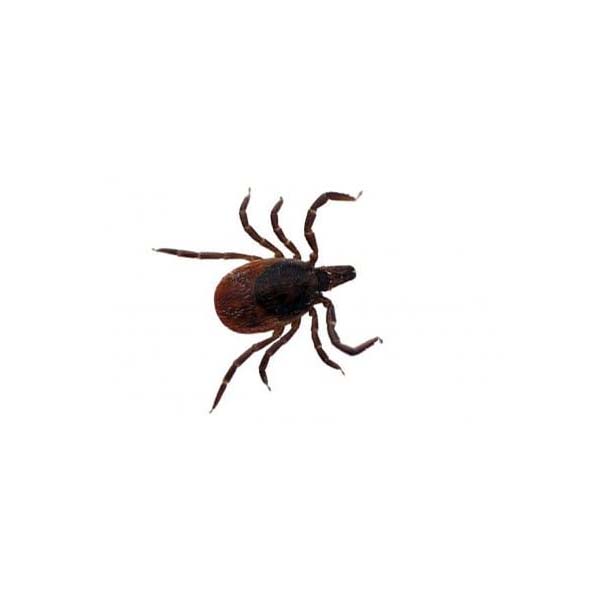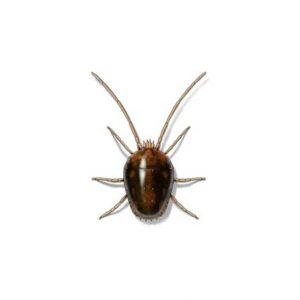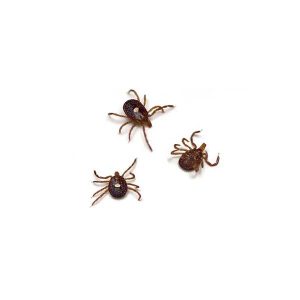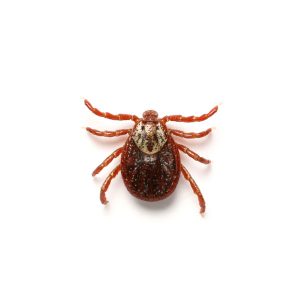What Is a Black-Legged Tick?
The black-legged tick, also known as the deer tick, is a small, hard-bodied tick commonly found in the eastern and central United States. It is best known for transmitting Lyme disease, along with other diseases such as anaplasmosis, babesiosis, and Powassan virus.
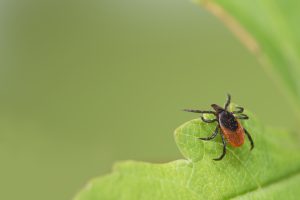 What Does a Black-Legged Tick Look Like?
What Does a Black-Legged Tick Look Like?
Black-legged (deer) ticks are flattened from top to bottom. Adult and nymph ticks have 8 legs, while larval ticks have 6 legs. The females have a red or orange-colored body behind the scutum (front section of a tick), and the males have a mostly black body behind the scutum with a brown or tan band on the outermost part of their body.
Habitat
Where do Black-Legged Ticks Live?
Black-legged ticks are commonly found in the eastern, midwestern, and northern regions of the United States, particularly in environments that support deer and other large mammals, which are their primary hosts.
Deer Ticks in Georgia
In Georgia, deer ticks are primarily found in wooded and brushy areas, particularly in the northern and central parts of the state. They thrive in dense leaf litter, tall grasses, and forest edges, providing ample cover and humidity. These ticks are also commonly found in areas where deer and small mammals are abundant, such as parks, hiking trails, and suburban areas with a mix of woods and open spaces.
The primary host of the adult ticks is white-tailed deer, hence the name deer tick, but they can and will get on other animals and humans. The nymphal and juvenile stages are found on smaller mammals or birds but can get on larger animals or humans. They wait on grass or tall foliage and attach to a host as it passes. After feeding, the tick drops back off of its host to lay eggs or molt. This usually happens in the forest as deer are roaming the area, but this is not exclusively where ticks will detach from their host.
How Long Do Deer Ticks Live?
Deer ticks can live for about two to three years, depending on environmental conditions and the availability of hosts. Their life cycle consists of four stages: egg, larva, nymph, and adult. Each stage requires a blood meal to progress to the next, and ticks can survive for extended periods (months to over a year) between feedings.
How Long Can Deer Ticks Live in a House?
Deer ticks generally do not survive long indoors. While they can live for several months in a house if they find a suitable host, they typically struggle due to the lower humidity and lack of appropriate hosts. In a dry indoor environment, deer ticks may only survive a few days to a few weeks. Their survival is much better outdoors, where they can find the humidity and hosts they need to thrive.
How Long Can Deer Ticks Live Without a Host?
Deer ticks can survive without a host for extended periods of time, depending on their life stage and environmental conditions.
- Larvae can survive several months (up to 8 months) without a host.
- Nymphs typically survive up to 6 months without a blood meal.
- Adults can live for up to a year or even longer without feeding if conditions are favorable.
However, their survival time without a host may be significantly reduced in less ideal conditions, such as lower humidity.
Health Risks and Dangers
Are Deer Ticks Dangerous to Humans?
Yes, deer ticks are dangerous to humans as they are primary carriers of Lyme disease, which can cause severe health issues if untreated, including joint pain, neurological problems, and heart complications. They can also transmit other illnesses like anaplasmosis and babesiosis. Due to their small size, deer ticks are often difficult to detect, making prompt removal and preventative measures crucial to avoid tick-borne diseases.
Are Deer Ticks Dangerous to Dogs?
Most people know that ticks can be responsible for transmitting diseases to humans, but what some people may not realize is that your pets can also get diseases like Rocky Mountain spotted fever or Lyme disease. Like humans, pets can catch Lyme disease, anaplasmosis, and babesiosis. These illnesses can cause symptoms such as fever, lethargy, joint pain, and even kidney failure in severe cases.
Need help with pest control?
Ready for your FREE quote?
Fill out the form below and we’ll be in touch!
*During normal business hours. After hours inquiries will be returned the next business day.
How To Get Rid of Black-Legged Ticks
As well as the preventative measures listed below, applying acaricides, particularly around your yard’s perimeter and known tick habitats, can significantly reduce tick populations. For expert protection, consider hiring a residential pest control service like Active Pest Control for specialized tick control treatments that target both adult ticks and their larvae. Consistent maintenance, along with professional pest control, is key to minimizing the risk of tick infestations in your home environment.
Black-Legged Ticks Prevention Tips
First, use tick preventatives on pets, such as collars, topical treatments, or oral medications. Regularly check pets and family members for ticks after outdoor activities, especially in wooded or grassy areas. In your yard, keep grass short, remove leaf litter, and create a barrier of wood chips or gravel between your lawn and wooded areas to deter ticks. Wear light-colored clothing to spot ticks easily, and tuck pants into socks when hiking. Applying EPA-approved insect repellents can also reduce the risk of tick bites.

